Recommended Reading
- 科学筑梦"Science Builds Dreams • Lights Up the Future" – Sanming, Where My Dreams Started
- 中农校庆报告“Renewables Solutions for Our Global Challenges” Keynote Talk at CAU 120th Anniversary
- 水热制氢Hydrogen production from biomass via hydrothermal gasification using Ni-Ce catalysts supported on Kaolin
- 深入企业Prof. Zhen Fang visited Bioenergy Enterprises
- 深入车间Profs. Janusz Kozinski and Zhen Fang visited bamboo products and ganoderma enterprises in Taining
Biomass group (https://biomass-group.njau.edu.cn/)
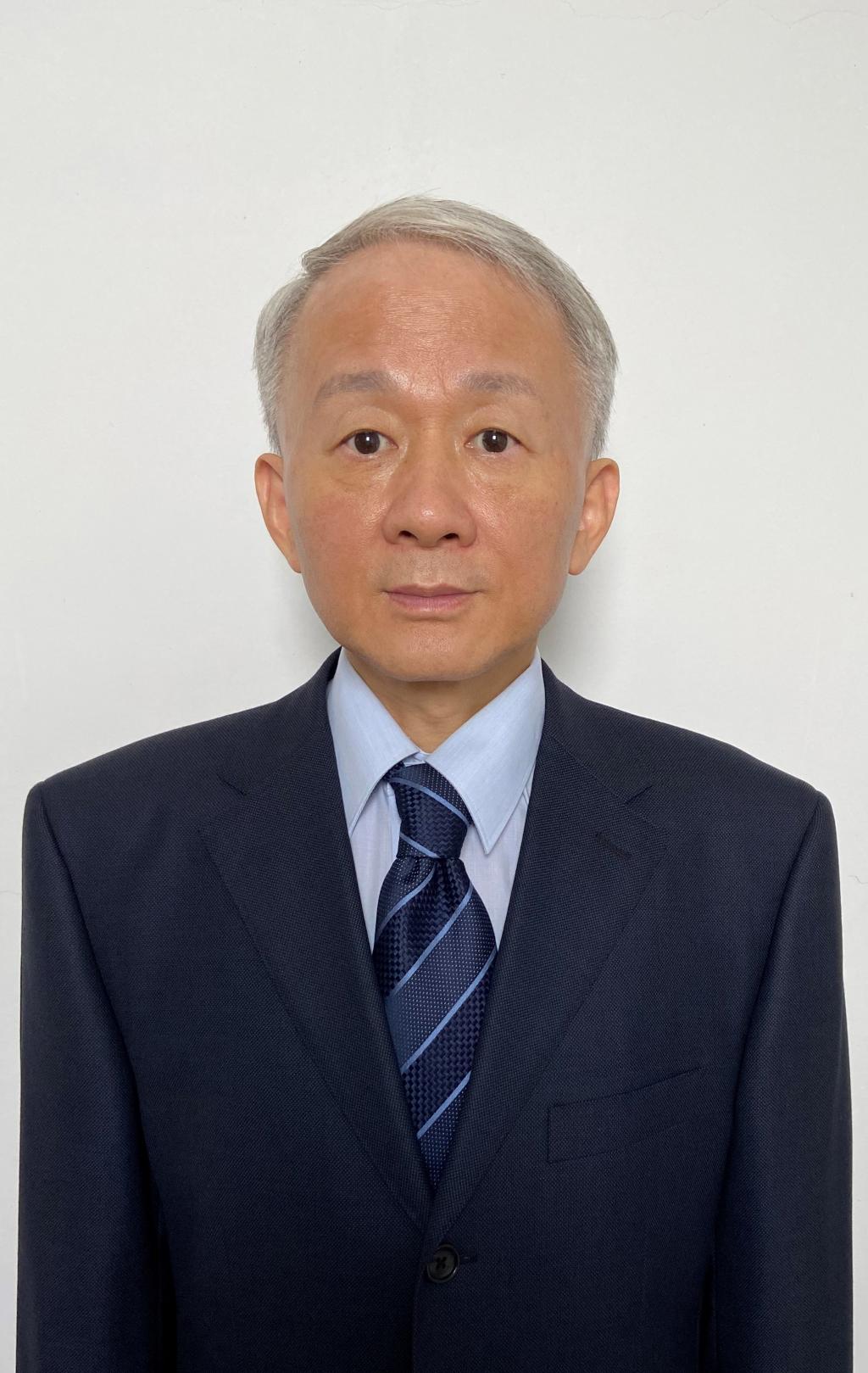 Biomass group at Nanjing Agricultural University was founded by Prof. Zhen Fang in 2015.
Biomass group at Nanjing Agricultural University was founded by Prof. Zhen Fang in 2015.
Prof. Zhen Fang (PI) (https://orcid.org/0000-0002-7391-372X) is the inventor of the “fast hydrolysis” process. He is Editor-in-Chief of Springer Book Series – Biofuels and Biorefineries, Elected Fellow of the Canadian Academy of Engineering (2021), Associate Editor of Biotechnol Biofuels (Springer), and Associate Editor of J Supercrit Fluid (Elsevier, 2018-21). He is also one of the editorial (advisory) board members of Biofuel Bioprod Bior (Wiley, 2012-18), Energy Sustain Soc (Springer). Prof. Fang is specializing in thermal/biochemical conversion of biomass, nanocatalysts synthesis and their applications, as well as pretreatment of biomass for biorefineries and supercritical fluid processes. He obtained his BSc, MSc and PhD degrees from China Agricultural University (Agricultural Engineering, Beijing) and PhD degree from McGill University (Materials Engineering, Montreal) as well as received further postdoc training in Chemical Engineering in Spain (Marie Curie Fellowship, Universidad de Zaragoza). He is listed in the “Most Cited Chinese Researchers” every year from 2014 to 2024 (Elsevier-Scopus; https://www.scopus.com/authid/detail.uri?authorId=7402681505).
He has more than 20-year international research experience at top universities and institutes around the world, including 1 year in Spain (University of Zaragoza), 3 years in Japan (Biomass Technology Research Center, AIST; Tohoku University), and more than 8 years in Canada (McGill University) in renewable energy and green technologies. He has worked for 7 years as a senior engineer in energy, bioresource utilization and engine design in the industry before moving to academia. He won the “Governor’s Friendship (Caiyun) Award” in 2012 in Yunnan for his outstanding contributions to the study and utilization of Jatropha biodiesel and bioenergy, 2013 "S&T Progress Award" (the first place) of Xishuangbanna Prefecture for Breeding of New Varieties of Jatropha, and 2017 “Excellent Supervisor Award” of Chinese Academy of Sciences and 2020 “Excellent Teacher Award” of Nanjing Agricultural University (NJAU) for training students. He won the 2020 "Springer-Nature China New Development Awards" for significant contributions to the UN Sustainable Development Goals. He was awarded the highest-ranking Professorship in NJAU in 2023.
Research Interests
1.Hydrolysis of lignocellulosic wastes
Fast hydrolysis, low-temperature hydrolysis with catalysts and enzymatic hydrolysis are studied. The sugars produced are biologically converted to biofuels and chemicals (such as bio-hydrogen, ethanol and 2,3 butanediol).
(1) Fast hydrolysis (e.g., 350 oC)
(2) Low-temperature hydrolysis with catalysts (e.g., 150 oC)
(3) Enzymatic hydrolysis (e.g., 50 oC)
2.Synthesis of biodiesel
Heterogeneous nano or magnetic catalysts (such as magnetic carbonaceous acid, calcined/activated hydrotalcite nanoparticles, Na2SiO3@Fe3O4/C, CaFe2O4-Ca2Fe2O5-based catalyst) are produced via different methods (such as co-precipitation, hydrothermal, calcinations, loading).
3.Chemical synthesis of value-added products from lignocellulosic wastes
Value-added products (such as 5-hydroxymethylfurfural, biochar, acids, furfural, alkyl levulinates and γ-valerolactone (GVL) etc.) are synthesized in green solvents with acid, base and bi-functional heterogeneous catalysts (such as modified zeolites, ZrO2-zeolite hybrids).
4.Biological production of biofuels from hydrolysates and organic wastes
Biofuels and chemicals (such as bio-hydrogen, ethanol, 2,3 butanediol, lipids) are produced via fermentation of hydrolysates and organic wastes.
5.Thermal conversions of biomass and organic wastes
(1) Fast pyrolysis
(2) Slow pyrolysis for biochar production
(3) H2 production from organic wastes
(4) Supercritical water oxidation (SCW oxidation) of toxic organic wastes
6.Hydrothermally solubilize biomass, and subsequently convert it to biofuels and chemicals
7.Nano or micro catalysts synthesis using the hydrothermal method or other conventional ways (e.g., precipitation and calcination)
8.Energy planning and policy, Techno-economic analysis
Theoretical Contributions:
Biomass group has made significant contributions to the fields of hydrolysis of lignocellulosic biomass, biodiesel synthesis and liquid biofuel production, supercritical fluid processes, catalyst synthesis and nanomaterials.
1.Pioneered the synthesis of nitrogen-containing compounds and liquid fuels at low temperature from carbohydrates (H Li, Z Fang* et al., Nat Commun, 2019, 10, 699; ZL201810885588.1;PCT/CN2017/106729, PCT/CN2019/098614). With or without nanocatalysts, lignocellulose can be almost completely converted into imines and liquid fuels after hydrolysis and decomposition (e.g., 2,5-dimethylfuran, methyl levulinate, γ-valerolactone, methylfuran).
Discovery and reaction mechanism of N-formyl quasi-catalytic species. As an important industrial raw material, primary amines have a wide range of applications in medicines, polymers, and functional materials. Generally, primary amines can be prepared by metal-catalyzed reductive amination, but there are problems such as expensive metal catalysts and complicated preparation processes. According to the above problem, we developed a green process for the production of primary amines under catalyst-free and solvent-free conditions. Through the study of kinetics, isotope labelling experiment and DFT calculation, it was found that in situ formed N-formyl quasi-catalytic species afford highly selective synthesis of formamides or amines with controllable levels from a variety of aldehyde- and ketone-derived platform chemical substrates (the reaction time can be as short as 3 min). Related results were published: H Li, Z Fang* et al., Nat Commun, 2019, 10, 699; Green Chem, 2020, 22, 582.
2.Synthesized nanocatalysts to catalyze the high yield production of liquid biofuels and chemicals (e.g., methyl levulinate, γ-valerolactone, 2,5-dimethylfuran, methylfuran, formamides) at low temperatures directly from carbohydrates (e.g., sugars, cellulose). It is found that 95% 2,5-dimethylfuran yield was obtained from fructose at 110 oC, 99% 2,5-dimethylfuran yield from 5-hydroxymethylfurfural and 97% 2-methylfuran yield from furfural were even achieved at room temperature (25 oC) when polymethylhydrosiloxane was used as H-donor. Therefore, liquid biofuels (e.g., 2,5-dimethylfuran) can be produced from sugars via the hydrolysis of lignocellulosic biomass that is easy for commercial applications in simple and inexpensive reactors.
Construction of acid-base bifunctional materials and synergistic catalytic mechanism. Integration of acidic and basic sites is difficult to be compatible in the conventional system into organic-inorganic porous materials through the solvent-thermal self-assembly method to construct an acid-base bifunctional nano-solid material. The bifunctional materials show excellent catalytic activity in the process of acid-base domino/cascade- reaction (hydrogenation-lactonization, sugar isomerization-dehydration reaction) and multivariate reaction (simultaneous esterification-transesterification reaction). It can greatly simplify the reaction process without an additional intermediate product separation process. Related results were published: H Li, Z Fang* et al., Appl Catal B, 2018, 227, 79; ChemSusChem, 2017, 10, 681; Appl Catal B, 2017, 200, 182.
Controllable C-C bond coupling technology is the basis for achieving biomass to long-chain alkanes. Aldol reaction is an important carbon chain growth reaction in organic synthesis and is often used to structure C-C bonds. By using hydrotalcite-like nanomaterials as precursors, ZnAlLa composite alkaline oxide materials were prepared. Compared with traditional oxides (such as ZnO, ZrO2), the materials can efficiently catalyze the condensation reaction, and the conversion rate of furfural is much higher than that of La2O3. It was found that the excellent performance can be attributed to the structure of La2O2CO3 in the ZnAlLa catalyst and the formation of a large number of La3+-O2- sites (LP Li, Z Fang* et al, Mol Catal, 2021, 515, 111893; X Kong, Z Fang* et al., Catal Commun, 2021, 149, 106207).
3.Developed a green process for the production of biodiesel using magnetic solid catalysts instead of conventional liquid catalysts that are unrecoverable. The solid catalysts can be easily separated magnetically for recycles and successfully used for Jatropha biodiesel production. Microwave and ultrasound techniques were also introduced to promote biodiesel production. Our group built up a patented pilot flow reactor for continuous production of biodiesel with the solid catalysts (3-5 t/day, patent license was transferred to a company). (4 CN patent; 20 papers in App Energy, Green Chem, Appl Catal B, Chem Eng J, Energ Convers Manage).
Verified the mechanism of solid alkali catalysts (such as sodium silicate, sodium aluminosilicate, etc.) and microwave and ultrasonic technology that hindered the saponification reaction of free fatty acids and alkalis, catalyzing the production of biodiesel from high acid value waste oil (Related results were published: F Zhang, Z Fang* et al., Green Chem, 2016, 18, 3302; Energy Convers Manag, 2017, 142, 107; WJ Cong, Z Fang* et al., Appl Energy, 2020, 264, 114735).
Explained that by introducing Lewis / Bronsted acid and basic sites, the catalyst has two catalytic active centers at the same time, which can simultaneously catalyze the esterification and transesterification of free fatty acids and triglycerides in high acid value oils to synthesize biodiesel. The process can reduce the reaction steps, reduce energy loss and pollution, and greatly improve the conversion efficiency of high-acid-value oils to produce biodiesel (Related results were published: YT Wang, Z Fang* et al., Appl Energy, 2017, 204, 702; Chem Eng J, 2018, 348, 929; Fuel, 2022, 322, 124168; Renew Energy, 2021, 175, 1001; J Clean Prod, 2022, 330, 129772; XM Wang, Z Fang* et al., Ind Crops Prod, 2022, 182, 114937; WJ Cong, Z Fang* et al., Green Chem, 2021, 23, 2595).
4.Production of aromatic nitrile by pyrolysis of waste polyester plastic with ammonia and its reaction mechanism
Aromatic nitrile is a kind of important industrial raw material, which are widely employed for medicine, polymer and functional material. Reasonable and value-added utilization of waste polyester plastics is very important. We have developed a method of catalytic pyrolysis with ammonia atmosphere to achieve the selective production of terephthalonitrile and benzonitrile from waste polyester plastics, and high purity of aromatic nitriles, and clarified the degradation paths of polyester plastics, and aromatic nitrile C-N bond construction mechanism. Related results were published: LJ Xu, Z Fang* et al., Waste Manag, 2019, 92, 97; Bioresour Technol, 2021, 320, 124252.
5.Organic solvent-Lewis acid pretreatment technology was established for the deconstruction and selective separation of lignocellulosic components from agricultural waste straw. The technology realizes the selective separation of a large amount of hemicellulose and lignin without losing cellulose under mild conditions. The mechanism of depolymerization and separation of lignin-carbohydrate complex in biomass, especially the change of lignin macromolecule during pretreatment, was elucidated by the multi-scale characterization of lignocellulosic structure. It provides a theoretical basis for the subsequent lignin recovery and utilization. Related results were published: S Tang, Z Fang* et al., Bioresour Technol, 2019, 294, 122164; 2019, 284, 98; 2020, 312, 123580; XL Liu, Z Fang* et al., Bioresour Technol, 2022, 347, 126721.
6.Regarding the catalytic conversion of lignocellulosic waste into hydrogen fuel, the following theoretical studies have been carried out. As a green fuel, hydrogen not only has a high specific heating value and zero pollution advantages but also can be converted into a variety of fuels and chemicals. We use modified 10Ni / Al2O3 catalysts with different Co loadings to catalyze the hydrothermal gasification of lignocellulosic waste to produce hydrogen, which improved the hydrogen yield and realized the utilization of lignocellulosic waste. Related results were published: J Sun, Z Fang* et al., J Supercrit Fluids, 2020, 162, 104863; S Nanda, Z Fang et al., J Int Hydrog Energy, 2021, https://doi.org/10.1016/j.ijhydene.2021.08.179.
The reason for the high gasification rate is clarified: sub/supercritical water has a low dielectric constant and large ion product, which is conducive to the dissolution and hydrolysis of lignocelluloses in water, and the low viscosity and large diffusion coefficient are conducive to the acceleration of mass transfer rate, thereby promoting the chemical reaction. It catalyzed the hydrothermal gasification of cotton straw to produce H2 with 82.6% yield by synthesized Co-Ni / Al2O3 catalyst. This is due to the formation of Ni-Co alloy in the Co-Ni / Al2O3 catalyst, which improves the gasification performance of the catalyst and enhances the ability of the catalyst to resist carbon deposition, avoiding the rapid deactivation of the catalyst caused by carbon deposition in catalyst.
7.Biomass pretreatment is the first step in the biorefining of woody fibre biomass and directly determines the efficiency and yield of the subsequent refining process. In biomass pretreatment with diols as solvents, the etherification of the diol at the lignin site introduces a "hydroxyl tail" to the lignin. Although etherification at the lignin site has been shown to inhibit lignin condensation, it can reduce the efficiency of lignin separation during organic solvent pretreatment as it competes with the lignin depolymerisation reaction. Prof Fang's group found that the "hydroxyl tail" introduced by the diol pretreatment directly increased the similarity between lignin and diol hydrogen bonding solvent parameters, which not only inhibited lignin condensation during pretreatment, but also improved lignin solubility, resulting in a 10% increase in lignin solubility and 20% increase in structural integrity (CY Dong, Z Fang* et al., 2022, Ind Crops Prod, 185, 115130).
8.As editor-in-chief, Springer Book Series – Biofuels and Biorefineries (https://www.springer.com/series/11687), Prof. Fang leads an editorial board composed of eight world leaders in biofuels and biorefineries (2 NAE members, 4 FCAE, 1 FRS and a famous professor at Tohoku University in Japan). The purpose of this series is to organize bioenergy experts around the world to publish a series of books related to biomass in different fields, aimed at the publication of at least two volumes per year. The book series will be focusing on introducing knowledge, research and recent exhibitions on all aspects related to biomass production, biofuels, bioproducts, chemicals, biomaterials, food and pharmaceutical products, energy planning and policy, as well as processing technologies. The book series will be a powerful and integrative source of biomass, bioenergy, biofuels, bioproducts and biorefinery for scientists, students, policy makers and engineers to reflect the explosive growth in this interdisciplinary area.
At present, Prof. Zhen Fang has published 22 English books (15 Springer books with 500k chapter downloads). The series has published 13 monographs, with 250k chapter downloads, one book wins 2020 “Springer-Nature China New Development Awards” in recognition of his exceptional contributions to the delivery of the UN Sustainable Development Goals (SDGs). Four books are among the “top 25% springer e-books”.
This book series has become the knowledge library of the latest progress and theoretical innovation in bioenergy studies and applications.
Other members:
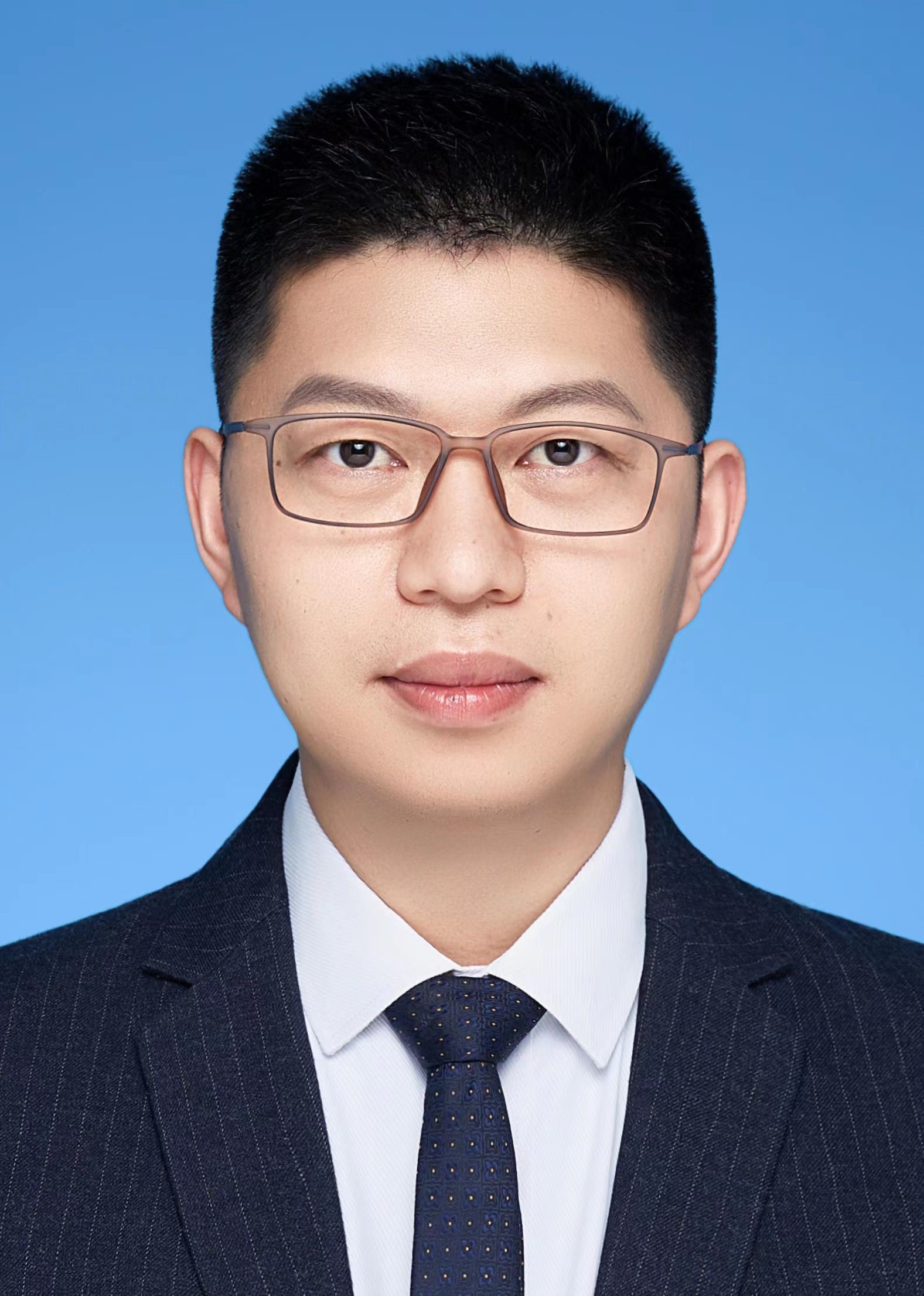 Dr. Lujiang Xu, associate professor, Nanjing Agricultural University introduced high-level talents, obtained his PhD degree in Renewable Clean Energy, University of Science and Technology of China in 2017. The research interests include: thermochemical (pyrolysis) conversion of biomass and solid organic waste to produce high value-added chemicals (pharmaceuticals, pharmaceutical precursors) and high-quality liquid fuels. He is PIs for NSFC (General and Youth Funds), NKRDPC sub-project, General and Youth Funds of Jiangsu Provincial NSF, Jiangsu Province Double Creation Doctoral Program etc. As the first or corresponding author, he has published 20 papers in authoritative journals on energy and environment such as Chemical Engineering Journal, Green Chemistry, Bioresource Technology, Energy, Waste Management, etc., and authorized more than 10 national invention patents.
Dr. Lujiang Xu, associate professor, Nanjing Agricultural University introduced high-level talents, obtained his PhD degree in Renewable Clean Energy, University of Science and Technology of China in 2017. The research interests include: thermochemical (pyrolysis) conversion of biomass and solid organic waste to produce high value-added chemicals (pharmaceuticals, pharmaceutical precursors) and high-quality liquid fuels. He is PIs for NSFC (General and Youth Funds), NKRDPC sub-project, General and Youth Funds of Jiangsu Provincial NSF, Jiangsu Province Double Creation Doctoral Program etc. As the first or corresponding author, he has published 20 papers in authoritative journals on energy and environment such as Chemical Engineering Journal, Green Chemistry, Bioresource Technology, Energy, Waste Management, etc., and authorized more than 10 national invention patents.
Personal website of Nanjing Agricultural University: https://coe.njau.edu.cn/info/1072/2470.htm
ORCID: https://orcid.org/0000-0001-9999-0777
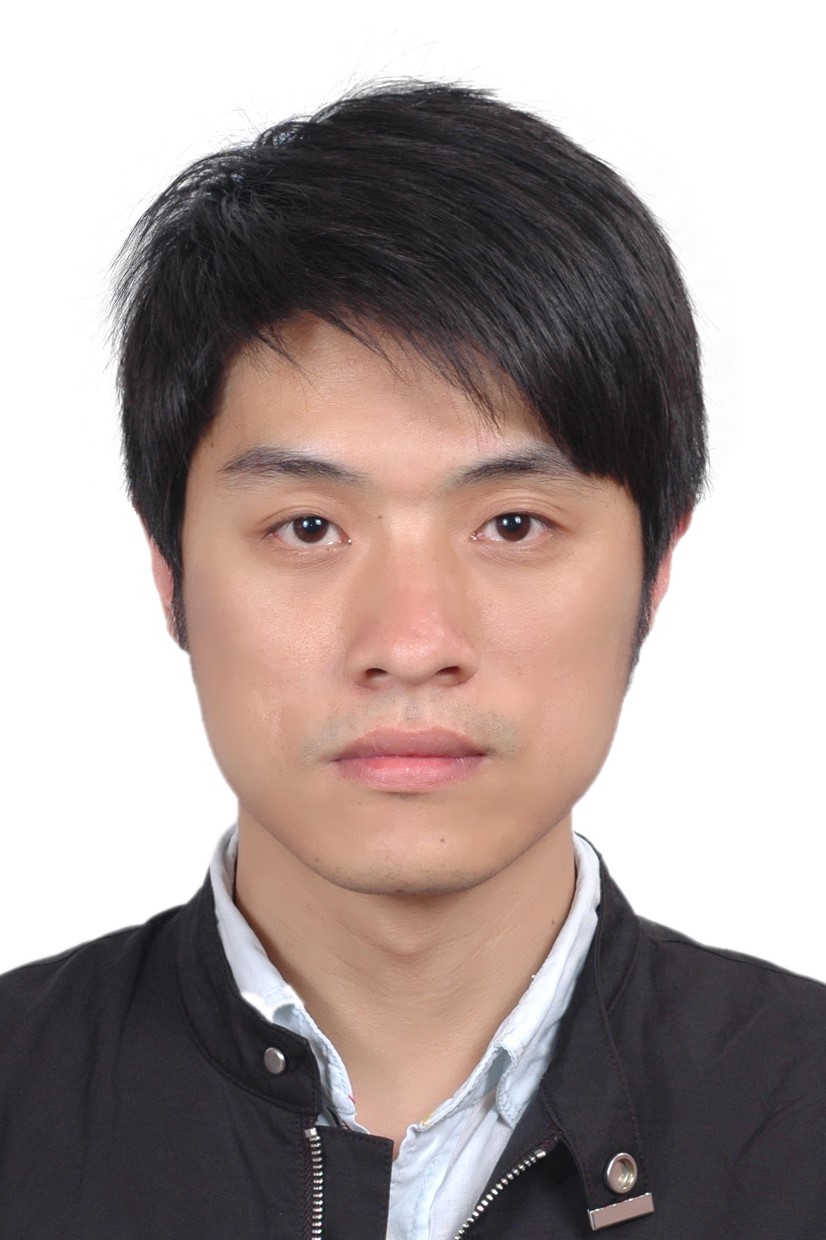 Dr. Wei Chen, associate professor, Nanjing Agricultural University introduced high-level talents, obtained his PhD degree in engineering at Huazhong University of Science and Technology in 2018. The research interests include: transformation mechanism and control methods of pollutants during biomass pyrolysis, preparation of functional biochar materials from biomass pyrolysis, and application of biochar materials in catalysis and energy storage. He is PIs for NSFC (Youth Fund), NKRDPC sub-project, General Fund of Jiangsu Provincial NSF, Special Funding and First-class Funding of China Postdoctoral Science Foundation, and Nanjing Agricultural University Scientific Research Initiation Projects. As the first or corresponding author, he has published 20 papers in authoritative journals on energy and environment such as Proceedings of the Combustion Institute, Environmental Science & Technology, Applied Energy, etc., and authorized more than 10 national invention patents.
Dr. Wei Chen, associate professor, Nanjing Agricultural University introduced high-level talents, obtained his PhD degree in engineering at Huazhong University of Science and Technology in 2018. The research interests include: transformation mechanism and control methods of pollutants during biomass pyrolysis, preparation of functional biochar materials from biomass pyrolysis, and application of biochar materials in catalysis and energy storage. He is PIs for NSFC (Youth Fund), NKRDPC sub-project, General Fund of Jiangsu Provincial NSF, Special Funding and First-class Funding of China Postdoctoral Science Foundation, and Nanjing Agricultural University Scientific Research Initiation Projects. As the first or corresponding author, he has published 20 papers in authoritative journals on energy and environment such as Proceedings of the Combustion Institute, Environmental Science & Technology, Applied Energy, etc., and authorized more than 10 national invention patents.
Personal website of Nanjing Agricultural University: https://coe.njau.edu.cn/info/1072/3765.htm
ORCID: https://orcid.org/0000-0001-6067-9789
 Dr. Shuai Gao, associate professor, Nanjing Agricultural University introduced high-level talents, obtained his PhD degree in Chemical Engineering, The University of Queensland, Australia in 2018. The research interests include: preparation and application of hierarchical porous carbon materials, gas adsorption and separation, nano-biochar preparation and high-value utilization, etc. During his postdoctoral work in the School of Chemical Engineering, University of Queensland, he participated in national projects in Australia. The total value of international cooperative industrial projects exceeded 25 million yuan. He is PIs for Youth Fund of Jiangsu Provincial NSF, the Nanjing Agricultural University Research Fund. He has published 16 papers in authoritative journals such as Carbon, Renewable and Sustainable Energy Reviews, Fuel Processing Technology, Microporous and Mesoporous Materials.
Dr. Shuai Gao, associate professor, Nanjing Agricultural University introduced high-level talents, obtained his PhD degree in Chemical Engineering, The University of Queensland, Australia in 2018. The research interests include: preparation and application of hierarchical porous carbon materials, gas adsorption and separation, nano-biochar preparation and high-value utilization, etc. During his postdoctoral work in the School of Chemical Engineering, University of Queensland, he participated in national projects in Australia. The total value of international cooperative industrial projects exceeded 25 million yuan. He is PIs for Youth Fund of Jiangsu Provincial NSF, the Nanjing Agricultural University Research Fund. He has published 16 papers in authoritative journals such as Carbon, Renewable and Sustainable Energy Reviews, Fuel Processing Technology, Microporous and Mesoporous Materials.
Personal website of Nanjing Agricultural University: https://coe.njau.edu.cn/info/1072/3936.htm
ORCID: https://orcid.org/0000-0003-4630-7641
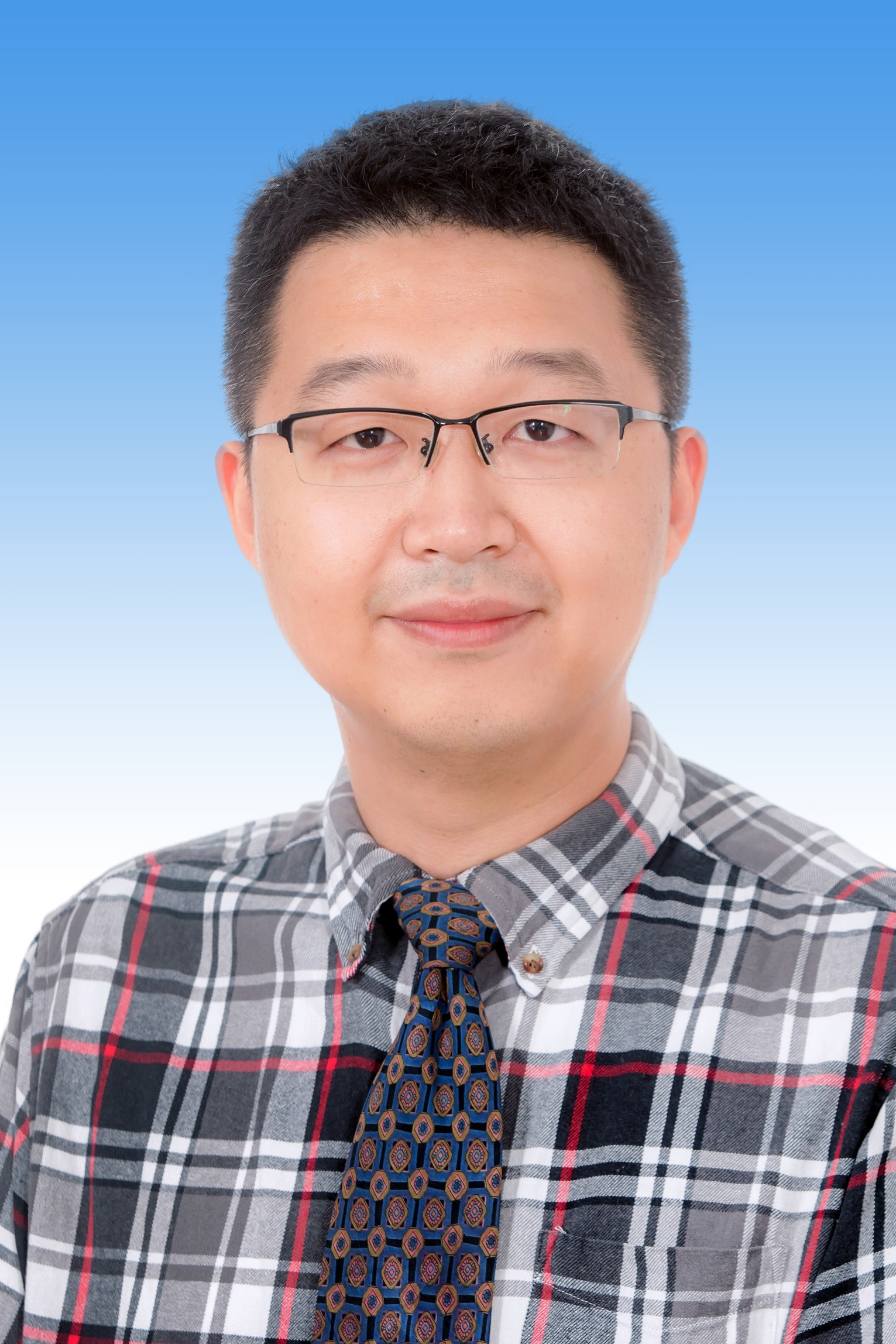 Dr. Chengyu Dong, lecturer, college of Engineering at Nanjing Agricultural University, obtained PhD in Hong Kong Polytechnic University in 2019. After graduation, he continued to stay in the original research group to do scientific research. During his master's degree, he won a postgraduate national scholarship, and during his Ph.D. study, he went to Oak Ridge National Laboratory to study lignin NMR analysis technology. He once chaired projects such as Jiangsu Province's Double Creation Doctorate and Nanjing Agricultural University's scientific research start-up. The research interests include: the changes of lignin structure during the pretreatment of agricultural and forestry wastes and the influence of the changes on the subsequent biorefinery processes (saccharification, fermentation and wood hydropyrolysis). He has published 12 research papers in SCI journals such as Green Chemistry, Applied Energy, Bioresource Technology, etc.
Dr. Chengyu Dong, lecturer, college of Engineering at Nanjing Agricultural University, obtained PhD in Hong Kong Polytechnic University in 2019. After graduation, he continued to stay in the original research group to do scientific research. During his master's degree, he won a postgraduate national scholarship, and during his Ph.D. study, he went to Oak Ridge National Laboratory to study lignin NMR analysis technology. He once chaired projects such as Jiangsu Province's Double Creation Doctorate and Nanjing Agricultural University's scientific research start-up. The research interests include: the changes of lignin structure during the pretreatment of agricultural and forestry wastes and the influence of the changes on the subsequent biorefinery processes (saccharification, fermentation and wood hydropyrolysis). He has published 12 research papers in SCI journals such as Green Chemistry, Applied Energy, Bioresource Technology, etc.
Personal website of Nanjing Agricultural University: https://coe.njau.edu.cn/info/1073/2509.htm
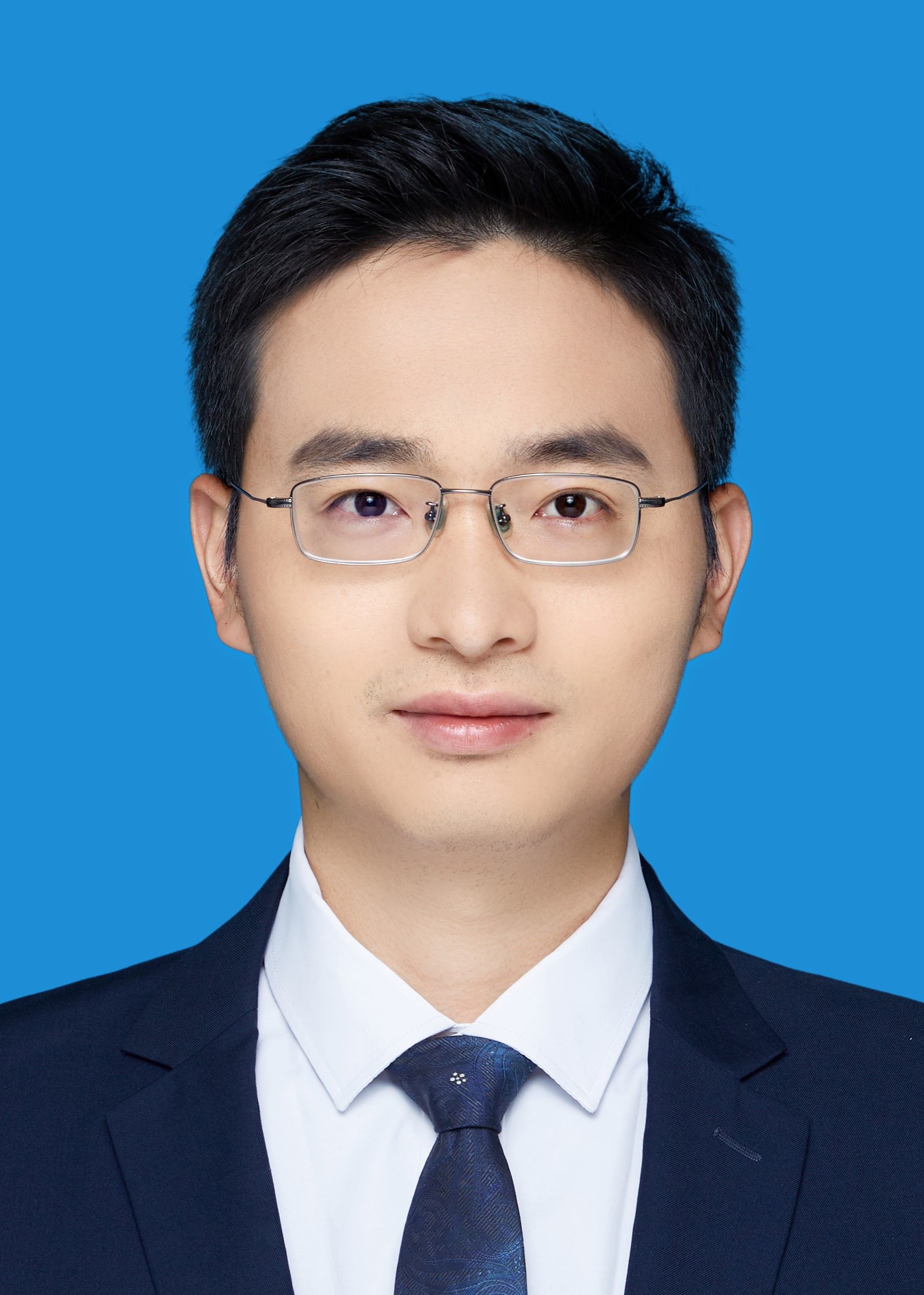 Dr. Chunxiao Gong, associate professor, Nanjing Agricultural University introduced high-level talents. He graduated from China Agricultural University with a bachelor's degree and a master's degree. In 2020, he obtained his PhD degree in wood science from the University of Copenhagen, Denmark. His research areas include: agricultural machinery and equipment, agricultural straw processing and utilization, biomass production of high-value chemicals, biochar catalysts, etc. He is PIs for NSFC (Youth Fund), Postdoctoral International Exchange Programs, Zhejiang Provincial Natural Science Foundation, and China Postdoctoral Science Foundation. He published 13 papers, obtained 3 authorized invention patents, and was the first author publishing 8 SCI papers in Renewable and Sustainable Energy Reviews, Green Chemistry (2 papers), Bioresource Technology, Renewable Energy, etc. During undergraduate and master's study, he designed a yak dung pickup cart, which solved the problem of mechanized pickup of yak dung in the Qinghai-Tibet Plateau area. Nearly 8,000 sets of the yak dung pickup cart have been applied in Tibet, Qinghai and other places, benefiting more than 50,000 herdsmen in the Qinghai-Tibet Plateau. Relying on this invention, he won the first prize of the 2021 Productivity Promotion Award issued by the China Productivity Promotion Center Association (the third person).
Dr. Chunxiao Gong, associate professor, Nanjing Agricultural University introduced high-level talents. He graduated from China Agricultural University with a bachelor's degree and a master's degree. In 2020, he obtained his PhD degree in wood science from the University of Copenhagen, Denmark. His research areas include: agricultural machinery and equipment, agricultural straw processing and utilization, biomass production of high-value chemicals, biochar catalysts, etc. He is PIs for NSFC (Youth Fund), Postdoctoral International Exchange Programs, Zhejiang Provincial Natural Science Foundation, and China Postdoctoral Science Foundation. He published 13 papers, obtained 3 authorized invention patents, and was the first author publishing 8 SCI papers in Renewable and Sustainable Energy Reviews, Green Chemistry (2 papers), Bioresource Technology, Renewable Energy, etc. During undergraduate and master's study, he designed a yak dung pickup cart, which solved the problem of mechanized pickup of yak dung in the Qinghai-Tibet Plateau area. Nearly 8,000 sets of the yak dung pickup cart have been applied in Tibet, Qinghai and other places, benefiting more than 50,000 herdsmen in the Qinghai-Tibet Plateau. Relying on this invention, he won the first prize of the 2021 Productivity Promotion Award issued by the China Productivity Promotion Center Association (the third person).
 Dr. Cao Yang, associate professor, Nanjing Agricultural University introduced high-level talents. She received her undergraduate degree from Hebei Normal University and earned her Ph.D. in Environmental Engineering from Fudan University in 2021. From 2021 to 2024, she conducted postdoctoral research at the Hong Kong Polytechnic University. Her research interests encompass the catalytic conversion of lignin and biomass platform molecules, the development and characterization of biomass-derived carbon-based materials, and the design and fabrication of two-dimensional structured nanocatalysts for environmental applications. Dr. Cao has published 12 SCI-indexed articles as either first author or corresponding author in journals such as PNAS, Applied Catalysis B: Environmental, Renewable and Sustainable Energy Reviews, Green Chemistry, and Bioresource Technology, contributing to a total of 30 published academic papers.
Dr. Cao Yang, associate professor, Nanjing Agricultural University introduced high-level talents. She received her undergraduate degree from Hebei Normal University and earned her Ph.D. in Environmental Engineering from Fudan University in 2021. From 2021 to 2024, she conducted postdoctoral research at the Hong Kong Polytechnic University. Her research interests encompass the catalytic conversion of lignin and biomass platform molecules, the development and characterization of biomass-derived carbon-based materials, and the design and fabrication of two-dimensional structured nanocatalysts for environmental applications. Dr. Cao has published 12 SCI-indexed articles as either first author or corresponding author in journals such as PNAS, Applied Catalysis B: Environmental, Renewable and Sustainable Energy Reviews, Green Chemistry, and Bioresource Technology, contributing to a total of 30 published academic papers.
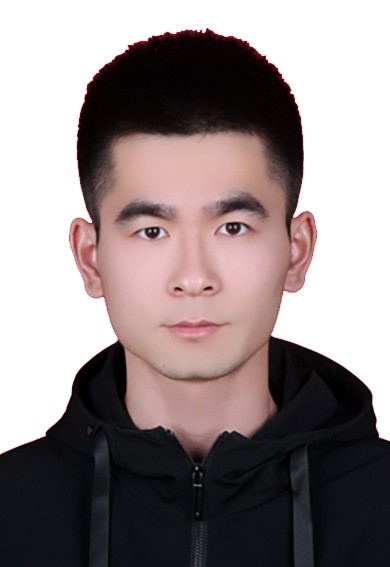 Dr. Lin Chen, lecturer, College of Engineering at Nanjing Agricultural University. He graduated from Qilu University of Technology with a bachelor's degree and received his Ph.D. in Chemical Engineering from Dalian University of Technology in 2025. During his master's degree, he won a postgraduate national scholarship, and during his Ph.D., he received funding from the Doctoral Fellowship Program of the Young Talent Support Project of the China Association for Science and Technology (CAST). His research focuses on the electrochemical oxidation of biomass and organic compounds to produce fine chemicals coupled with green hydrogen production, the design and synthesis of non-noble metal nanocatalysts, and the development of carbon-based photocatalysts for pollutant degradation. Dr. Chen has published over 20 papers, including 6 first author articles in journals such as Chemical Society Reviews, Nature Communications, Applied Catalysis B: Environmental (2 articles), Small, and ACS Sustainable Chemistry & Engineering.
Dr. Lin Chen, lecturer, College of Engineering at Nanjing Agricultural University. He graduated from Qilu University of Technology with a bachelor's degree and received his Ph.D. in Chemical Engineering from Dalian University of Technology in 2025. During his master's degree, he won a postgraduate national scholarship, and during his Ph.D., he received funding from the Doctoral Fellowship Program of the Young Talent Support Project of the China Association for Science and Technology (CAST). His research focuses on the electrochemical oxidation of biomass and organic compounds to produce fine chemicals coupled with green hydrogen production, the design and synthesis of non-noble metal nanocatalysts, and the development of carbon-based photocatalysts for pollutant degradation. Dr. Chen has published over 20 papers, including 6 first author articles in journals such as Chemical Society Reviews, Nature Communications, Applied Catalysis B: Environmental (2 articles), Small, and ACS Sustainable Chemistry & Engineering.
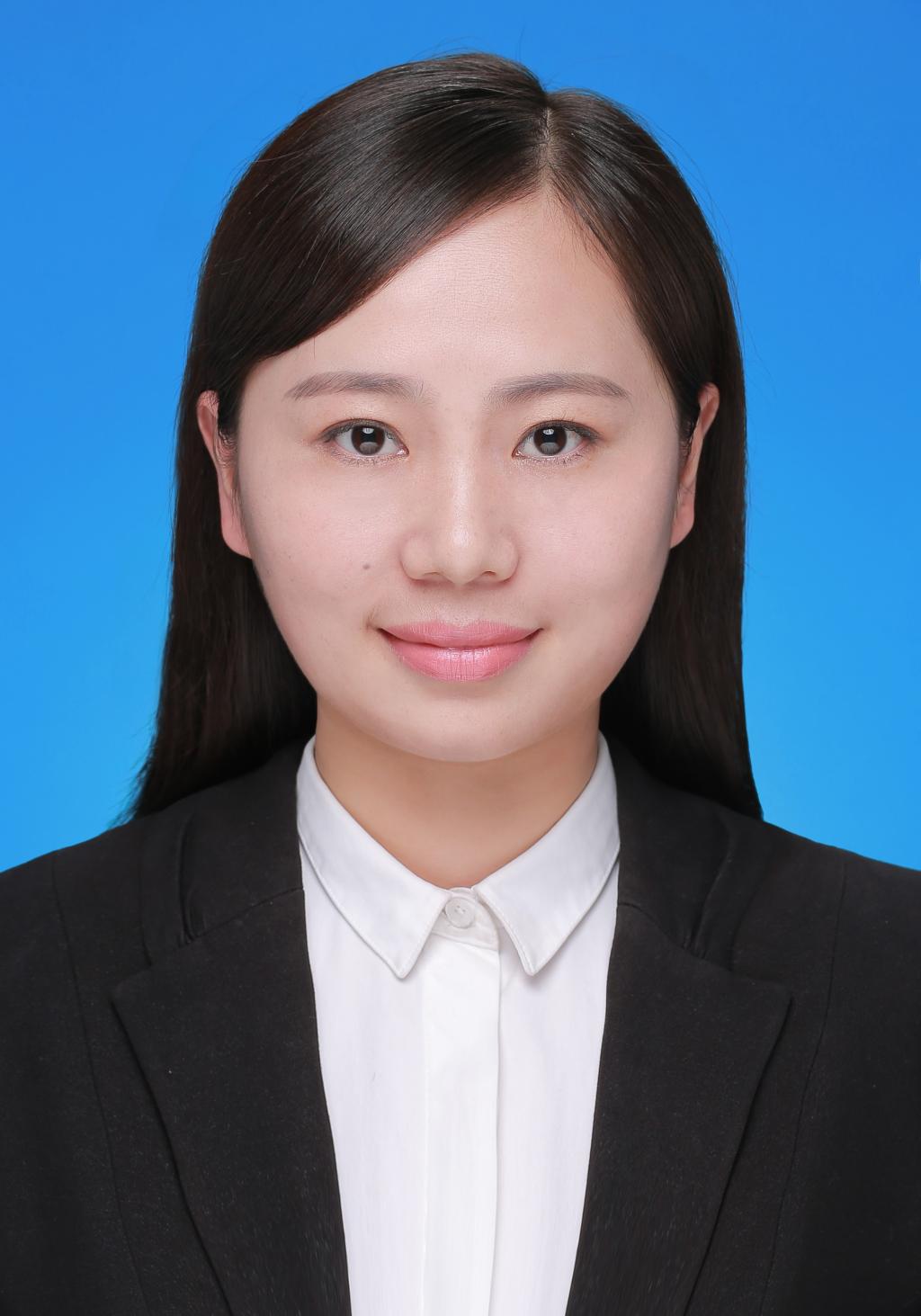 Dr. Huan Zhang, postdoc, obtained PhD in Agriculture, China Agricultural University in 2018. The research interests include: biogas fermentation raw material storage and biological pretreatment, lactic acid bacteria metabolism mechanism and micro-ecological preparations, efficient biogas fermentation and conversion of lignocellulose raw materials. She has published more than 10 papers in authoritative journals on energy and environment such as Bioresource Technology, Waste Management, Energy & Fuels, etc., and authorized 1 national invention patent.
Dr. Huan Zhang, postdoc, obtained PhD in Agriculture, China Agricultural University in 2018. The research interests include: biogas fermentation raw material storage and biological pretreatment, lactic acid bacteria metabolism mechanism and micro-ecological preparations, efficient biogas fermentation and conversion of lignocellulose raw materials. She has published more than 10 papers in authoritative journals on energy and environment such as Bioresource Technology, Waste Management, Energy & Fuels, etc., and authorized 1 national invention patent.
ORCID: https://orcid.org/0000-0002-1505-869X
 Ms. Jing-mei Chen, manager of biomass group
Ms. Jing-mei Chen, manager of biomass group
Adjunct professors:
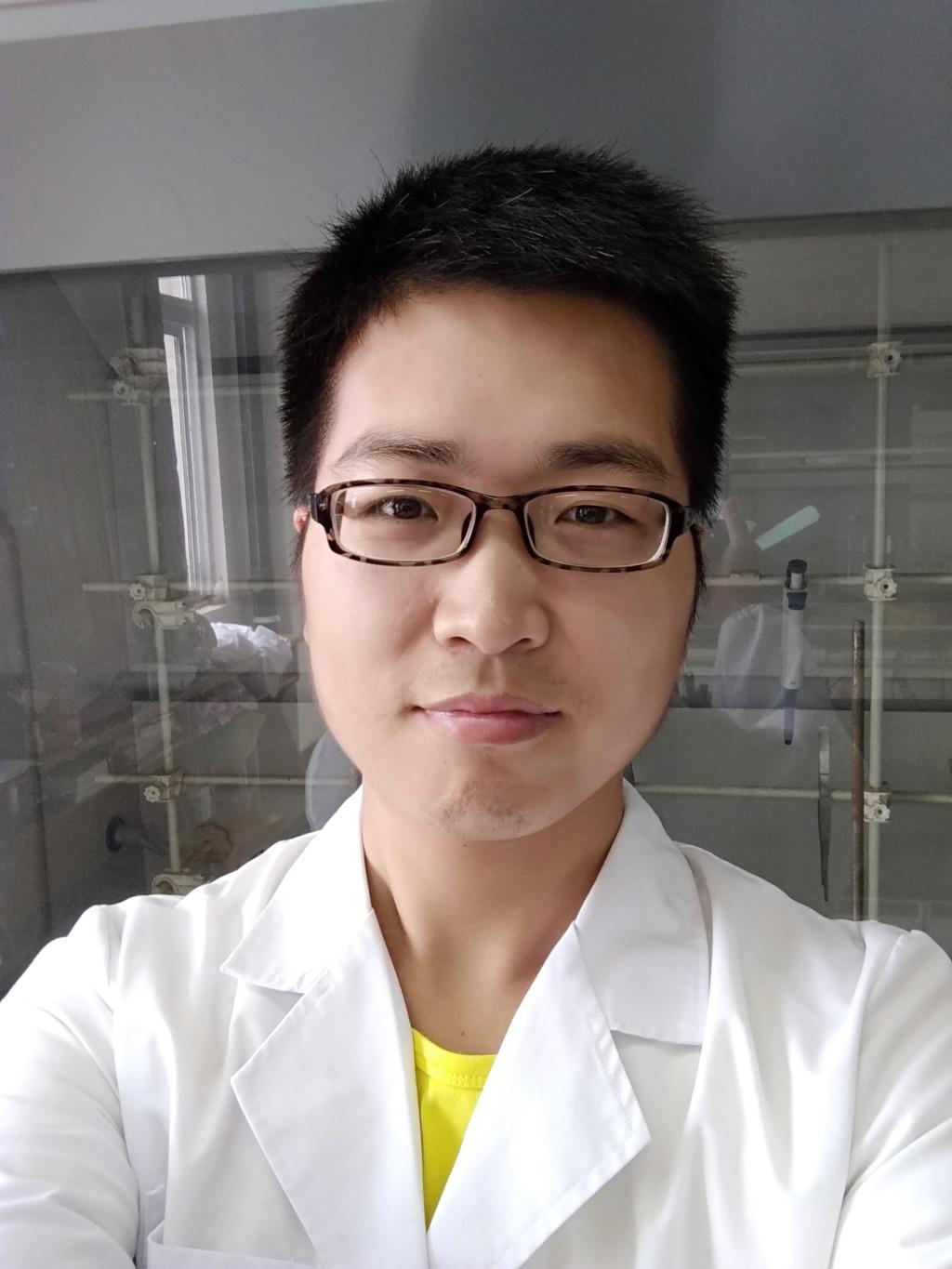 Prof. Hu Li (4/2020-now), expert in bioenergy on the conversion of biomass with bifunctional solid catalysts.
Prof. Hu Li (4/2020-now), expert in bioenergy on the conversion of biomass with bifunctional solid catalysts.
url: https://www.researchgate.net/profile/Hu_Li32
https://www.scopus.com/authid/detail.uri?authorId=35933455300
 Prof. Yi-tong Wang (09/2018-now), expert in energy on biodiesel
Prof. Yi-tong Wang (09/2018-now), expert in energy on biodiesel
url: https://www.researchgate.net/profile/Yi-Tong-Wang
https://www.scopus.com/authid/detail.uri?authorId=56532148700
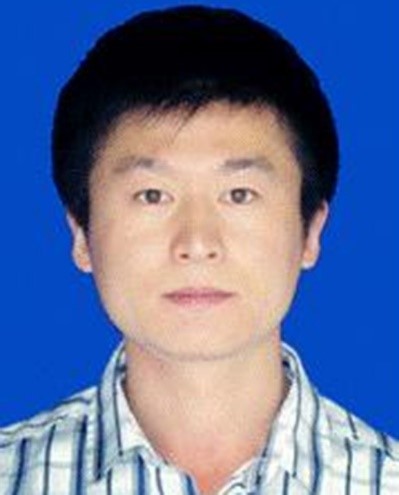 Dr. Fan Zhang (05/2025-now), Professor, expert in energy on biodiesel. His main research focuses on the design and preparation of multifunctional solid catalysts, and their use for the high-value utilization of plant resources. Prof. Zhang is a doctoral and master’s supervisor in fields such as "Natural Product Chemistry," "Biomedicine," and "Materials Science and Chemical Engineering". He has chaired nearly ten scientific research and talent development projects, including those funded by the National Natural Science Foundation of China, "West Light of China", and the Yunnan Applied Basic Research Program. He has been selected as a member of the professional committee of "Plant Carbon Sink and Biomass" in the Chinese Botanical Society, "Yunnan Province Revitalization Talent", "Youth Innovation Promotion Association" of CAS, and also certified as "Product Director", "Product Manager," and "Lean Product Manager" by the Global Professional Talent Capacity Building Center. Meanwhile, he has published over 30 papers in SCI journals (mostly Q1), holds more than 10 patents granted by the SIPO, and has successfully transferred numerous scientific research achievements via the Intellectual Property Operation Management Center of CAS. His accomplishments include being awarded the "Excellent Doctoral Dissertation" by CAS, "CAS Dean's Award", "Excellent Presentation" award by the Botanical Society and so on.
Dr. Fan Zhang (05/2025-now), Professor, expert in energy on biodiesel. His main research focuses on the design and preparation of multifunctional solid catalysts, and their use for the high-value utilization of plant resources. Prof. Zhang is a doctoral and master’s supervisor in fields such as "Natural Product Chemistry," "Biomedicine," and "Materials Science and Chemical Engineering". He has chaired nearly ten scientific research and talent development projects, including those funded by the National Natural Science Foundation of China, "West Light of China", and the Yunnan Applied Basic Research Program. He has been selected as a member of the professional committee of "Plant Carbon Sink and Biomass" in the Chinese Botanical Society, "Yunnan Province Revitalization Talent", "Youth Innovation Promotion Association" of CAS, and also certified as "Product Director", "Product Manager," and "Lean Product Manager" by the Global Professional Talent Capacity Building Center. Meanwhile, he has published over 30 papers in SCI journals (mostly Q1), holds more than 10 patents granted by the SIPO, and has successfully transferred numerous scientific research achievements via the Intellectual Property Operation Management Center of CAS. His accomplishments include being awarded the "Excellent Doctoral Dissertation" by CAS, "CAS Dean's Award", "Excellent Presentation" award by the Botanical Society and so on.
 Dr. Chin Siew Xian is an Associate Professor at the Universiti Kebangsaan Malaysia. She holds a Master’s and Ph.D. in Materials Science. Her research focuses on advanced materials, biomass utilization, water treatment, and environmental remediation. She has led and participated in various national and international research projects and has published extensively in peer-reviewed journals. Dr. Chin is actively involved in teaching and postgraduate supervision, with a strong commitment to sustainable materials and environmental science.
Dr. Chin Siew Xian is an Associate Professor at the Universiti Kebangsaan Malaysia. She holds a Master’s and Ph.D. in Materials Science. Her research focuses on advanced materials, biomass utilization, water treatment, and environmental remediation. She has led and participated in various national and international research projects and has published extensively in peer-reviewed journals. Dr. Chin is actively involved in teaching and postgraduate supervision, with a strong commitment to sustainable materials and environmental science.
https://www.scopus.com/authid/detail.uri?authorId=55937339900
https://www.researchgate.net/profile/Siew-Xian-Chin
Ten PhD students 10位博士生:
Miss Ning Li 李宁 (09/2023-now), on mechanical treatment of lignocelluloses.
Mr. Shen-ren Li 李胜任(09/2023-now), on hydrothermal liquefaction of lignocelluloses.
Miss Jing-jing Guo郭静静 (09/2021-now), on biodiesel production from insect oils with lipase.
Miss Li Wang王莉 (09/2022-now), on pretreatment of biomass with solvents.
Miss Xiao-ru Meng孟晓茹 (09/2022-now), on biomass-based battery.
Mr. Zhi-qiang Wang 王志强 (09/2021-now), on hydrothermal reaction of inorganics from combustion.
Miss Amalia binti Zulkifli (09/2020-now, Co-supervisor, Universiti Kebangsaan Malaysia), on pretreatment of biomass with nanoparticles.
Miss Qian Dong 董倩(09/2020-now), on fermentation of pretreated biomass for lipids.
Mr. Pei-dong Wu 吴培栋 (09/2020-now), on photo-catalytic conversion of lignocelluloses.
Mr. Zheng-diao Miao 缪正调 (09/2018-now), on synthesis of composite materials from lignocelluloses.
Nineteen master students 19位硕士生:
Mr. Jia-cheng Ye 叶嘉城 (Dr. Shuai Gao supervisor, 09/2023-now), on gas adsorption and separation based on pyrolysis of biomass.
Mr. Xuan Tao 陶璇 (Dr. Shuai Gao supervisor, 09/2023-now), on surface treatment of biochar: Methods, Surface Analysis a
Mr.Xiao-lei Shi 石晓雷 (Dr. Wei Chen supervisor, 09/2023-now), on treatment of biochar.
Mr. Zi-bin Zhou 周子斌 (09/2023-now),on biodiesel.
Mr. Bo Xia 夏 波 (Dr. Chengyu Dong supervisor, 09/2023-now), on ultrasound pretreatment of biomass for hydrolysis.
Mr. Ming-Xu Zhu 朱明旭 (Dr. Lujiang Xu supervisor, 09/2023-now), on pyrolysis of biomass.
Mr. Ting-yu Bi 毕庭喻(09/2023-now), on biodiesel.
Mr. Guo-qiang Zhu祝国强 (Dr. Lujiang Xu supervisor, 09/2022-now), on liquid fuels via pyrolysis.
Miss Hong-li Ma马宏莉 (09/2022-now), on fast pyrolysis for anhydroglucose.
Miss Yu-rou Wang王雨柔 (09/2022-now), on pretreatment of biomass for N-containing biochar.
Miss Wan-ying Qiu 邱婉莹 (09/2021-now), on pretreatment of biomass for hydrolysis.
Mr. Ge-liang Xie 谢葛亮(Dr. Shuai Gao supervisor, 09/2021-now, Supervisor: Dr. Lujiang Xu), Pyrolysis of biomass.
Mr. Rafeeqa bt Muhamad Mahizan (09/2020-now, Co-supervisor, Universiti Kebangsaan Malaysia), on nanocatalyst for biofuels biodiesel.
Miss Wen-juan Guo 郭文娟 (09/2022-now), on production of biochar via pyrolysis.
Mr. Gongxun Xu 徐功迅(09/2020-now), on hydrothermal production of gas.
Mr. Jia-xue Zhang张嘉璇 (09/2019-now), on fermentation for lipids.
Past students at Nanjing agricultural university (2016-now):
Nine master students 9位硕士生 {Mr. Jian Yang 杨剑 (09/2021-06/2023), on MOF-based catalyst for biodiesel; Mr. Xian-jun Zhou周贤君 (09/2020-06/2022, Supervisor: Dr. Lujiang Xu); Mr. Yan-qing Song宋彦庆 (09/2019-06/2022), on hydrothermal conversion of biomass; Miss Lu-ping Li 李路平 (09/2018-06/2021), on catalytic synthesis of liquid biofuels; Mr. Guao-hua Dong 董国华 (09/2018-06/2020) on hydrothermal gasification; Mr. Jie Sun 孙杰 (09/2017-06/2020) on subcritical water gasification; Miss Qian Dong (09/2018-06/2020) on pretreatment biomass; Miss Le-yao Zhang 张乐瑶 (09/2017-06/2019) on fast pyrolysis of plastics; Mr. Xiao-jie Wei 魏孝捷 (09/2017-06/2019) on synthesis of liquid biofuels; Mr. Kam Sheng Lau (03/2017-03/2019) from National University of Malaysia on microwave-assisted production of value-added products from palm oil wastes (co-supervisor)
Four PhD students 4位博士生{Miss Xiao-le Liu 刘小乐 (09/2019-09/2023), on mechanochemical pretreatment of biomass; Miss Wen-jie Cong丛文杰 (09/2017-09/2021), on green production of biodiesel (win 2020 President scholarship of NJAU); Mr Song Tang唐松 (09/2017-10/2020), on microbial lipids production from lignocelluloses (win 2022 Excellent Doctorial Dissertations Award of NJAU); Mr. Umar Adli Bin Amran (01/2015-01/2018, co-supervisor) from National University of Malaysia, on synthesis of biopolymers from palm oil wastes. Two postdoc fellows:
Dr. Hu Li (4/2016-1/2020), on conversion of biomass with bifunctional solid catalysts.
Dr. He Song (11/2016-04/2019, female), on pretreatment agricultural wastes for biogas.
-----------------------------------------------------------------------------
南京农业大学生物能源研究组 (https://biomass-group.njau.edu.cn/)

方真教授(https://orcid.org/0000-0002-7391-372X)毕业于中国农业大学,获工学学士、硕士、博士学位(导师:曾德超院士),还获麦吉尔大学工学博士学位(导师:JA Kozinski院士)以及欧共体居里夫人博士后。他在西班牙、日本(通产省工业技术院、东北大学)和加拿大(麦吉尔大学)工作12.1年后,于2007年全职回国,先后在中科院(昆明)和南京农业大学工作。他是加拿大工程院院士、Springer系列丛书“生物燃料和生物炼制”总编辑、快速水解技术发明人、Biotechnol Biofuels (Springer) 和J Supercrit Fluid (Elsevier, 2018-20)副主编,Biofuel Bioprod Bior (Wiley, 2012-2018) 顾问编委。连续9年(2014-22)进入“中国高被引学者”能源领域榜单(Elsevier; https://www.scopus.com/authid/detail.uri?authorId=7402681505)。获2012云南省政府彩云奖和2017中国科学院优秀导师奖(中科院百篇优博论文《碳基磁性催化剂制备及其催化合成生物柴油绿色工艺研究》指导教师)。他有205篇论文发表于国际著名的能源/化工刊物/农业工程(https://publons.com/researcher/2506047/zhen-fang/),近13年在国际著名出版社出版生物能源领域英文专著22部(Springer 15部,章节总下载数约50万次)。作为第一发明人或本小组的发明,31项中国和5项美国发明专利已授权。
生物能源研究组拥有400 m2的实验室,各项仪器和设备包括安东帕微波反应仪、超声波反应器、快速热解反应器、微波辅助超声波合成仪、磁力搅拌高温高压(Parr)反应釜、微型反应釜、程序升温加热反应器、TPD、BET、GC(分气体和液体进样)、HPLC、TOC、FT-IR、GC-MS、激光粒度仪、全自动发酵罐、摇床、UV分光光度计、高速冷冻离心机、冷冻干燥机、超纯水机器、消毒罐、酶标仪等。研究组由9名固定人员组成,科研人员8名(1位教授、5位副教授和2位讲师)、实验室管理人员1名、博士生10名和硕士生18名。 近6 年来,发表60 多篇论文和书的章节(如 Nat Commun、Prog Energ Combust、Appl Catal B、Green Chem、Appl Energy),申请10项发明专利(美国专利2项),出版Springer和Elsevier英文专著6部(其中3部为Springer高下载图书),同时还获2020施普林格-自然“中国新发展奖” 、2021贵州自然科学一等奖、2022 中国侨界贡献奖和2023 南京农业大学立德树人楷模。现任国务院农业工程学科评议组成员、教育部农业工程教学指导委员会委员和江苏省科协海智专家。
方真教授领导的生物能源组在生物能源领域做出了重大贡献,具体如下:
1.开创了从碳水化合物中低温合成含氮化合物和液体燃料的方法 (H Li, Z Fang* et al., Nat Commun, 2019, 10, 699; ZL201810885588.1;PCT/CN2017/106729, PCT/CN2019/098614)。研究创新点在于无论有没有纳米催化剂,木质纤维素水解和分解后几乎可以完全转化为亚胺和液体燃料(2,5-二甲基呋喃、乙酰丙酸甲酯、γ-戊内酯和甲基呋喃),低温合成降低了能耗和简化了反应装置的设计,可实现农林废弃物绿色转化为高品质的产品。研究突破点还有发现了N-甲酰基准催化物种及反应机制。伯胺作为重要的工业原料,在药物、聚合物、功能材料等方面具有广泛的应用价值。通常。它可通过金属催化还原胺化反应制备得到,催化剂价格昂贵、制备过程复杂。针对上述问题,研究组开发了一种全新的在无催化剂和溶剂的条件下合成伯胺的绿色方法,通过动力学、同位素标记实验以及 DFT (密度泛函理论)计算发现原位形成的 N-甲酰基作为准催化物种,可促进并调控一系列生物质基醛和酮化合物高选择性定量转化为甲酰胺或胺(反应时间可短至3 min)。相关工作发表在:H Li, Z Fang* et al., Nat Commun, 2019, 10, 699; Green Chem, 2020, 22, 582。
2.合成纳米催化剂,在低温条件下直接催化碳水化合物(例如糖,纤维素)高产率生产液体生物燃料和化学品(例如乙酰丙酸甲酯,γ-戊内酯,2,5-二甲基呋喃和甲基呋喃)。研究发现在110 oC条件下,从果糖中可获得2,5-二甲基呋喃的产率为95%。在室温条件(25 oC),以聚甲基氢硅氧烷作为氢供体时,可以从5-羟甲基糠醛中获得99%的2,5-二甲基呋喃产率和糠醛中97%的2-甲基呋喃产率。因此,可以通过木质纤维素的水解糖和分解后小分子化合物生产液体生物燃料(例如2,5-二甲基呋喃),这方法易于在简单且廉价的反应器中进行商业化应用生产液体燃料。
酸-碱双功能材料的构筑及其协同催化机制以制备液体燃料。将常规体系中难兼容的酸性和碱性位点,通过研发的热液自组装手段,整合到有机-无机多孔材料上,构筑出兼具酸-碱位点的双功能纳米固体材料。该类双功能材料在酸-碱级联反应(氢化-内酯化、糖异构化-脱水反应等)和多元反应(同时酯化-酯交换反应等)过程中,表现出优异的催化活性,且可大大简化反应工艺、无需额外中间产物分离过程等。相关工作发表在:H Li, Z Fang* et al., Appl Catal B, 2018, 227, 79; ChemSusChem, 2017, 10, 681; Appl Catal B, 2017, 200, 182。
可控的C-C键偶联技术是实现生物质到长链烷烃液体燃料的基础。羟醛缩合是有机合成中重要的碳链增长反应,常用于架构C-C键。通过以类水滑石纳米材料为前驱体,制备ZnAlLa复合碱性氧化物材料,该材料相较于传统的氧化物(如ZnO、ZrO2)能够高效催化缩合反应,并且糠醛转化速率远高于La2O3。通过表征分析发现,其优异的性能可归因于ZnAlLa催化剂中La2O2CO3结构以及大量La3+-O2-位点的形成 (LP Li, Z Fang* et al, Mol Catal, 2021, 515, 111893; X Kong, Z Fang* et al., Catal Commun, 2021, 149, 106207)。
3.开发了出绿色工艺,使用磁性固体催化剂代替无法回收的常规液体催化剂生产生物柴油。固体催化剂可以很容易地通过磁力分离进行再循环,并成功用于小桐子生物柴油的生产。并且引入了微波和超声技术来提升生物柴油的生产。研究组发明了一种流动反应器并建造了中试装置,利用固体催化剂连续生产生物柴油。
阐明固体碱催化剂(如:硅酸钠、硅铝酸钠等)以及微波和超声技术抗自由脂肪酸与碱发生皂化反应和催化高酸值废弃油脂制备生物柴油的机制(相关工作发表:F Zhang, Z Fang* et al., Green Chem, 2016, 18, 3302; Energy Convers Manag, 2017, 142, 107; WJ Cong, Z Fang* et al., Appl Energy, 2020, 264, 114735)。解释了通过引入路易斯/布朗斯特酸和碱性位点,使催化剂同时具备两种催化活性中心,可同时催化高酸值油脂中的自由脂肪酸和甘油三酯发生酯化和转酯化反应合成生物柴油,该工艺可缩减反应步骤、减少能量损耗和污染、大大提高了高酸值油脂制备生物柴油的转化效率(相关工作发表:YT Wang, Z Fang* et al., Appl Energy, 2017, 204, 702; Chem Eng J, 2018, 348, 929; Fuel, 2022, 322, 124168; Renew Energy, 2021, 175, 1001; J Clean Prod, 2022, 330, 129772; XM Wang, Z Fang* et al., Ind Crops Prod, 2022, 182, 114937; WJ Cong, Z Fang* et al., Green Chem, 2021, 23, 2595)。
4.废弃聚酯塑料热解氨化资源化制备芳香腈及其反应机制。芳香腈是一类重要的工业原料,在药物、聚合物、功能材料等方面具有广泛的应用价值。废弃聚酯塑料是目前生活中大宗的废弃塑料,对其合理和增值化利用非常重要。方真教授研究组开发了一种通过氨气氛围催化热解的方法实现废弃聚酯塑料选择性制备对苯二甲腈和苯甲腈两种化学品,并实现芳香腈的提纯,以及明确聚酯塑料降解途径和芳香腈 C-N键构筑机制,为实现废弃化合物的高附加值资源化利用和芳香睛化学品的绿色生产的提供一条可能的反应途径。相关工作发表在:LJ Xu, Z Fang* et al., Waste Manag, 2019, 92, 97; Bioresour Technol, 2021, 320, 124252。
5.以农业秸秆为原料,针对木质纤维素结构选择性分离其组分,方真教授和研究生建立了有机溶剂-路易斯酸和球磨预处理技术。该技术实现在了温和条件下,不损失纤维素的同时,选择性分离出大量半纤维素和木质素用以发酵生产微生物油脂。并通过木质纤维素结构上多尺度表征,阐明了生物质中木质素-碳水化合物复合物的解聚分离机制,尤其是预处理过程中木质素大分子的变化,为后续木素回收利用提供了理论基础。相关工作发表在:S Tang, Z Fang* et al., Bioresour Technol, 2019, 294, 122164; 2019, 284, 98; 2020, 312, 123580; XL Liu, Z Fang* et al., Bioresour Technol, 2022, 347, 126721。
6.围绕木质纤维素废弃物催化转化为氢气燃料,开展了如下理论研究:氢气作为一种绿色燃料, 不仅具有高的比热值和零污染优点,还可以转化为多种燃料和化学品。方真教授指导研究生利用不同Co负载量改性10Ni/Al2O3催化剂,用于催化木质纤维素废弃物水热气化制取氢气,大大提高了氢气产率。相关工作发表:J Sun, Z Fang* et al., J Supercrit Fluids, 2020, 162, 104863; S Nanda, Z Fang et al., J Int Hydrog Energy, 2021, https://doi.org/10.1016/j.ijhydene.2021.08.179。
阐明了高气化率的原因: 亚/超临界水具有低的介电常数和大的离子积这有利于木质纤维素废弃物在水中进行溶解和水解,且低的粘度和大的扩散系数有利于加快传质速率,从而促进化学反应。所合成的Co-Ni/Al2O3催化剂催化棉花秸秆水热气化的H2产率可以达到82.6%,这是由于催化剂中形成了Ni-Co合金,提高了催化剂的气化性能,增强了抗积碳的能力,避免了催化剂在反应中因积碳引起的失活。
7.农林废弃生物质资源化不仅可以减少废弃物对环境的污染而且是我国改善能源结构的现实需求。生物质预处理是木质纤维生物质生物炼制的第一步,直接决定了后续炼制过程的效率和产量。在以二元醇为溶剂的生物质预处理过程中,二元醇在木质素a位的醚化反应为木质素引入“羟基尾巴”。虽然a位的醚化反应已被证实可以抑制木质素的缩合,但是由于其与木质素的解聚反应是竞争反应,在有机溶剂预处理的过程中会降低木质素的分离效率。方真教授研究组发现二元醇预处理引入的“羟基尾巴”直接增加木质素与二元醇氢键溶剂参数的相似度,不仅可以抑制预处理过程中木质素的缩合,还可以提高木质素的溶解度,使木质素的溶出率提高10%,结构完整度提高20% (CY Dong, Z Fang* et al., 2022, Ind Crops Prod, 185, 115130)。
8.方真教授作为Springer系列丛书“生物燃料和生物炼制” 创始总编辑 (https://www.springer.com/series/11687),他领导的编委会,由八位世界著名的生物燃料和生物炼制专家组成(两位美国工程院院士,四位加拿大工程院院士,一位加拿大皇家学会院士和一位日本东北大学著名教授)。该系列丛书的目的是组织世界各地的生物能源专家出版一系列在不同领域与生物质相关的书籍,旨在每年至少出版1-2册专著。该系列丛书将着重于介绍与生物质生产,生物燃料,生物制品,化学品,生物材料,食品和医药产品,能源规划和政策,以及加工技术相关的所有方面的知识,研究和近展。该系列丛书将是强大的和综合的有关生物质生产,生物能源,生物燃料,生物制品的知识库。为科学家,学生,政策制定者和工程师提供知识以反映生物炼制这个交叉学科领域研究的爆炸性增长并引导该学科的发展。
目前,方真教授出版英文专著20多部。该系列丛书出版11部专著,章节下载量(电子版销售量)25万次。其中一本书赢得了2020年“斯普林格-自然中国新发展奖”,以表彰他对实现联合国可持续发展目标(SDGs)的杰出贡献。他编著的4 部专著已进入Springer高下载书籍前25%。该系列丛书已成为生物燃料研究最新进展和理论创新的知识库。方真教授除了发表高水平的学术论文和专著以及组织各国著名专家编辑出版学术专著,由于他在工程方面做出的重要贡献,特别是改装设计和制造大量高压反应装置,发现超临界水能完全溶解塑料、纤维素和木材的技术,2021年当选加拿大工程院院士 (https://biomass-group.njau.edu.cn/info/1016/1681.htm)。
生物能源组研究方向:
转化农业和生物质废弃物为高附加值的燃料,化学品和生物制品。具体研究内容包括如下:
(i)、绿色溶剂(冷冻冰晶、水热水、离子液体、有机电解液、超临界流体等)的研发与应用(预处理和生物燃料合成),双功能催化剂合成及用于催化生物质生产液体燃料和化学品等;
(ii)、水热转化(快速水解纤维素、木质纤维素生产可发酵糖、有机酸和化学品等;水热气化),热解和燃烧技术和装置的开发与应用;
(iii)、微生物发酵法转化木质纤维素水解产物生产油脂(生物柴油)、醇、酮、有机酸、氢气和沼气及其它次级代谢产物,微生物发酵法转化副产品甘油生产乳酸、丙二醇等化学品;
(iv)、纳米和固体催化剂的制备及应用,包括预处理和催化木质纤维素水解并生产可发酵糖,合成化学品和生物燃料,和催化植物油制备生物柴油等;
(v)、能源政策和规划,能源系统优化和评价。
研究组成员:

徐禄江,副教授, 本科毕业于南京林业大学,2017年获得中国科学技术大学可再生洁净能源博士学位。主要研究方向包括:生物质及固体有机废弃物热化学(热解)转化制备高附加值化学品(医药、医药前体)和高品质液体燃料。主持国家自然科学基金面上和青年基金、江苏省自然科学基金面上和青年基金、江苏省双创博士等项目10余项。以第一或通讯作者在Green Chemistry、Bioresource Technology、Energy、Waste Management等能源与环境权威刊物上发表论文20篇,授权国家发明专利10余项。
南京农业大学个人网页:https://coe.njau.edu.cn/info/1072/2470.htm
ORCID: https://orcid.org/0000-0001-9999-0777

陈伟,副教授,南京农业大学高层次引进人才,本科毕业于苏州大学,2018年获得华中科技大学工学博士学位。主要研究方向包括:生物质热解过程中污染物转化机理及控制方式,生物质热解制备功能型生物炭材料,及炭材料在催化、储能等方面的应用。主持国家自然科学基金青年项目、国家重点研发计划子课题、江苏省自然科学基金面上项目中国博士后基金特别资助、面上项目一等资助、南京农业大学科研启动等项目。以第一或通讯作者在Proceedings of the Combustion Institute、Environmental Science & Technology、Applied Energy等能源与环境权威刊物上发表论文20篇,授权国家发明专利10余项。
南京农业大学个人网页:https://coe.njau.edu.cn/info/1072/3765.htm
ORCID: https://orcid.org/0000-0001-6067-9789

高帅,副教授, 中国致公党党员,欧美同学会会员,南京农业大学高层次引进人才,本科毕业于中国矿业大学(北京),2018年获澳大利亚昆士兰大学化学工程博士学位。主要研究方向包括:多级孔结构碳材料的制备与应用、气体吸附与分离、纳米生物质炭制备与高值化利用、固体废弃物(赤泥等)的综合利用。2018-2022于昆士兰大学化学工程学院从事博士后研究工作,期间参与澳大利亚国家项目、国际合作工业项目总值超2500万元人民币,主持江苏省自然科学基金青年项目、南京农业大学高层次引进人才科研基金启动项目。在Carbon、Renewable and Sustainable Energy Reviews、Fuel Processing Technology、Microporous and Mesoporous Materials等权威刊物上发表论文20余篇。
南京农业大学个人网页:https://coe.njau.edu.cn/info/1072/3936.htm
ORCID: https://orcid.org/0000-0003-4630-7641
 董澄宇,讲师,南京农业大学工学院,生物质能源研究组。2019年获得香港理工大学博士,毕业后继续留在原课题组做科学研究。硕士期间荣获研究生国家奖学金,读博期间到美国橡树岭国家实验室学习木质素核磁共振分析技术。主持江苏省双创博士,南京农业大学科研启动等项目。目前主要研究农林废弃物预处理过程中木质素结构的变化以及该变化对后续生物炼制过程(糖化、发酵和木质水热解)的影响。在Green Chemistry, Applied Energy, Bioresource Technology等SCI期刊发表研究论文12篇。
董澄宇,讲师,南京农业大学工学院,生物质能源研究组。2019年获得香港理工大学博士,毕业后继续留在原课题组做科学研究。硕士期间荣获研究生国家奖学金,读博期间到美国橡树岭国家实验室学习木质素核磁共振分析技术。主持江苏省双创博士,南京农业大学科研启动等项目。目前主要研究农林废弃物预处理过程中木质素结构的变化以及该变化对后续生物炼制过程(糖化、发酵和木质水热解)的影响。在Green Chemistry, Applied Energy, Bioresource Technology等SCI期刊发表研究论文12篇。
南京农业大学个人网页:https://coe.njau.edu.cn/info/1073/2509.htm
 龚春晓,副教授,南京农业大学高层次引进人才,本科及硕士毕业于中国农业大学,2020年获得丹麦哥本哈根大学木材科学博士学位。主要研究方向包括:农业机械装备、秸秆加工与转化应用、生物质制备高值化学品、生物炭催化剂等。主持国家青年基金、博士后国际交流计划引进、浙江省自然科学基金、中国博士后科学基金面上资助项目,共发表学术论文13篇,获得授权发明专利3项,以第一作者在Renewable and Sustainable Energy Reviews、Green Chemistry(2篇)、Bioresource Technology、Renewable Energy等期刊发表SCI论文8篇(中科院一区6篇),EI论文1篇。本科及硕士期间,设计了一种牦牛粪便捡拾车(高原捡拾车),解决了青藏高原地区牦牛粪便的机械化捡拾问题,被中央电视台《我爱发明》、人民日报、新华社等国内主要媒体多次报道,目前在西藏、青海等地累计推广应用近8000台,受益青藏高原地区牧民5万余人,依托该发明获得由中国生产力促进中心协会颁发的2021年度生产力促进奖一等奖(第三完成人)。
龚春晓,副教授,南京农业大学高层次引进人才,本科及硕士毕业于中国农业大学,2020年获得丹麦哥本哈根大学木材科学博士学位。主要研究方向包括:农业机械装备、秸秆加工与转化应用、生物质制备高值化学品、生物炭催化剂等。主持国家青年基金、博士后国际交流计划引进、浙江省自然科学基金、中国博士后科学基金面上资助项目,共发表学术论文13篇,获得授权发明专利3项,以第一作者在Renewable and Sustainable Energy Reviews、Green Chemistry(2篇)、Bioresource Technology、Renewable Energy等期刊发表SCI论文8篇(中科院一区6篇),EI论文1篇。本科及硕士期间,设计了一种牦牛粪便捡拾车(高原捡拾车),解决了青藏高原地区牦牛粪便的机械化捡拾问题,被中央电视台《我爱发明》、人民日报、新华社等国内主要媒体多次报道,目前在西藏、青海等地累计推广应用近8000台,受益青藏高原地区牧民5万余人,依托该发明获得由中国生产力促进中心协会颁发的2021年度生产力促进奖一等奖(第三完成人)。
 曹阳,副教授,南京农业大学高层次引进人才,本科毕业于河北师范大学,2021年获得复旦大学环境工程专业博士学位,2021-2024年在香港理工大学开展博士后研究。主要研究方向包括:木质素及生物质平台分子催化转化、生物质衍生碳基材料、二维结构纳米催化剂的设计构筑及环境应用等。以第一作者通讯作者在PNAS、Applied catalysts B、Renewable and Sustainable Energy Reviews、Green Chemistry、Bioresource Technology等期刊发表SCI论文12篇,共发表学术论文30篇,获得授权发明专利1项。
曹阳,副教授,南京农业大学高层次引进人才,本科毕业于河北师范大学,2021年获得复旦大学环境工程专业博士学位,2021-2024年在香港理工大学开展博士后研究。主要研究方向包括:木质素及生物质平台分子催化转化、生物质衍生碳基材料、二维结构纳米催化剂的设计构筑及环境应用等。以第一作者通讯作者在PNAS、Applied catalysts B、Renewable and Sustainable Energy Reviews、Green Chemistry、Bioresource Technology等期刊发表SCI论文12篇,共发表学术论文30篇,获得授权发明专利1项。
 陈林,讲师,南京农业大学工学院,生物质能源研究组。本科毕业于齐鲁工业大学,2025年获得大连理工大学化学工艺专业博士学位。硕士期间荣获研究生国家奖学金,博士期间荣获中国科协青年人才托举工程博士生专项计划资助。主要研究方向包括:生物质/有机物电化学氧化制备精细化学品耦合绿氢生产、非贵金属纳米催化剂的设计和构筑、碳基光催化剂的设计及其污染物的降解等。以第一作者在Chemical Society Reviews、Nature Communications、Applied catalysts B-Environmental(2篇)、Small、ACS Sustainable Chemistry & Engineering 等期刊发表SCI论文6篇,共发表学术论文20余篇,获得授权发明专利1项。
陈林,讲师,南京农业大学工学院,生物质能源研究组。本科毕业于齐鲁工业大学,2025年获得大连理工大学化学工艺专业博士学位。硕士期间荣获研究生国家奖学金,博士期间荣获中国科协青年人才托举工程博士生专项计划资助。主要研究方向包括:生物质/有机物电化学氧化制备精细化学品耦合绿氢生产、非贵金属纳米催化剂的设计和构筑、碳基光催化剂的设计及其污染物的降解等。以第一作者在Chemical Society Reviews、Nature Communications、Applied catalysts B-Environmental(2篇)、Small、ACS Sustainable Chemistry & Engineering 等期刊发表SCI论文6篇,共发表学术论文20余篇,获得授权发明专利1项。
 张环,博士后,2018年获得中国农业大学农学博士学位。主要研究方向包括:沼气发酵原料储存和生物预处理,乳酸菌代谢机理及微生态制剂,木质纤维素原料的高效沼气发酵转化。在Bioresource Technology、Waste Management、Energy & Fuels等能源与环境权威刊物上发表论文十余篇,授权国家发明专利1项。
张环,博士后,2018年获得中国农业大学农学博士学位。主要研究方向包括:沼气发酵原料储存和生物预处理,乳酸菌代谢机理及微生态制剂,木质纤维素原料的高效沼气发酵转化。在Bioresource Technology、Waste Management、Energy & Fuels等能源与环境权威刊物上发表论文十余篇,授权国家发明专利1项。
ORCID: https://orcid.org/0000-0002-1505-869X
 陈敬妹老师,研究组秘书和管理人员。
陈敬妹老师,研究组秘书和管理人员。
兼职教师: 李虎教授 (4/2020-now), 青年科学家,生物能源专家(中组部青拔人才)。
李虎教授 (4/2020-now), 青年科学家,生物能源专家(中组部青拔人才)。
url: https://www.researchgate.net/profile/Hu_Li32
https://www.scopus.com/authid/detail.uri?authorId=35933455300
 王一同教授 (09/2018-now), 女青年科学家,生物柴油专家 (中国科协托举人才、河北省优青)。
王一同教授 (09/2018-now), 女青年科学家,生物柴油专家 (中国科协托举人才、河北省优青)。
url: https://www.researchgate.net/profile/Yi-Tong-Wang
https://www.scopus.com/authid/detail.uri?authorId=56532148700
 张帆,研究员,研究方向为多功能催化剂研发制备及其用于植物资源高值化量产,他主持了国家自然科学基金、西部之光及云南省应用基础研究计划等课题近十项,入选了中国植物学会“植物碳汇与生物质”专业委员会委员、云南省“兴滇英才”及中国科学院“青年创新促进会”成员,以及全球专业人才能力建设中心授予的“产品总监”、“产品经理”及“精益产品经理”等,担任天然产物化学、生物医药、材料与化工等专业博士/硕士研究生导师,以第一/通讯及参与作者在国内外知名期刊发表学术论文三十余篇、国家知识产权局授权专利十余项及中国科学院知识产权运营管理中心拍卖转让科研成果多项,荣获中国科学院优秀博士学位论文、“院长奖”与植物学会“优秀报告”等。
张帆,研究员,研究方向为多功能催化剂研发制备及其用于植物资源高值化量产,他主持了国家自然科学基金、西部之光及云南省应用基础研究计划等课题近十项,入选了中国植物学会“植物碳汇与生物质”专业委员会委员、云南省“兴滇英才”及中国科学院“青年创新促进会”成员,以及全球专业人才能力建设中心授予的“产品总监”、“产品经理”及“精益产品经理”等,担任天然产物化学、生物医药、材料与化工等专业博士/硕士研究生导师,以第一/通讯及参与作者在国内外知名期刊发表学术论文三十余篇、国家知识产权局授权专利十余项及中国科学院知识产权运营管理中心拍卖转让科研成果多项,荣获中国科学院优秀博士学位论文、“院长奖”与植物学会“优秀报告”等。
 陈秀娴博士, 现任马来西亚国民大学副教授,拥有材料硕士和博士学位。她的研究方向包括先进材料的开发、生物质资源利用、水处理与环境修复技术等。近年来主持和参与多项国内外科研项目,并在国际期刊发表多篇研究成果。她积极参与教学与研究生培养,致力于推动可持续材料在环境科学领域的应用。
陈秀娴博士, 现任马来西亚国民大学副教授,拥有材料硕士和博士学位。她的研究方向包括先进材料的开发、生物质资源利用、水处理与环境修复技术等。近年来主持和参与多项国内外科研项目,并在国际期刊发表多篇研究成果。她积极参与教学与研究生培养,致力于推动可持续材料在环境科学领域的应用。
https://www.scopus.com/authid/detail.uri?authorId=55937339900
https://www.researchgate.net/profile/Siew-Xian-Chin
---------------------------------------------------------------------------------
Previous Biomass group in Chinese Academy of Sciences (CAS):
One associate professor:
Dr. Jia Luo, on conversions of lignin in organic solvents and hot-water.
One assistant professor:
Dr. Fan Zhang, on catalyst synthesis for hydrolysis and biodiesel conversions.
One postdoc student
Dr. Mazloom shah (from Pakistan), on decarboxylation of bio-based organic acids and fatty acid methyl esters under hydrothermal conditions using nano-catalysts
Seven PhD students:
Miss Fengjiao Lai, on conversion of biomass with bi-functional catalysts.
Miss Xiyan Sun, on pretreatment of lignocelluloses for enzymatic hydrolysis. (currently visiting for 2 years in UCLA, USA).
Miss Dan Jiang (from University of Science and Technology of China), on anaerobic production of biohydrogen from biomass.
Mr. Xingkang Li, on chemical production of furfural from biomass (evaluated as excellent student, 2013).
Miss Tongchao Su (from University of Science and Technology of China), on solid acid catalyst synthesis for biomass hydrolysis.
Miss Yitong Wang, on solid catalysts for the production of biodiesel (awarded national scholarship, 2015);
Mr. Umar Adli Bin Amran (from National University of Malaysia), on synthesis of biopolymers from palm oil wastes.
Four master students
Miss Yuqing Zhu (from University of Science and Technology of China), on fermentation of biomass;
Mr. Jing Li, on catalytic hydrothermal gasification of biomass.
Miss Yating Yang (from University of Science and Technology of China), on fermentation of biomass;
Miss Xingxia Yang, on biodiesel production at low temperatures;
Two undergraduate students:
Mr. Wen Jiang (from Kunming University of Science and Technology), on biochar production from lignin in organic solvents.
Mr. Bo Han (from Kunming University of Science and Technology), on synthesis of biodiesel in flow reactors.
————————————————————-
行政秘书:
陈敬妹
副研究员:
罗嘉
助理研究员:
张帆 (在职博士生)
博士研究生:
孙西艳(2011级) 张帆(在职 2013级) 江丹(2013级) 李兴康(2013级) 苏同超(2014级) 赖风娇(2015级) 王一同(2016级) Umar Adli Bin Amran (马来西亚国立大学联合培养, 2015级)
硕士研究生:
朱长辉(2013级) 李靖(2014级) 朱玉芹(2014级) 杨亚婷(2015级) 杨星霞(2015级)
本科生:
韩波 (2016级)蒋文 (2016级)
已毕业学生(包括课题联合培养与毕业设计):
刘云虎 本科 ,湘潭大学与课题组合作(2008)
张绍志 硕士 ,西南林业大学与课题组合作(2009)
胡远飞 本科 ,云南民族大学与课题组合作(2009)
龙运多 硕士 ,转博(2008-2010)
李一华 本科 ,西南林业大学与课题组合作(2010)
薛宝金 本科 ,云南大学与课题组合作(2010)
戎净霈 专科 ,思茅师专实习生(2010)
周铁军 本科 ,昆明理工大学(2011本科毕业设计)
杨林彬 本科 ,昆明理工大学(2011本科毕业设计)
张 帆 硕士 ,湘潭大学(联合培养, 2011)
潘慧琳 博士(马来西亚国立大学联合培养, 2011)
蒋丽群 硕士 ,转博(2009-2011)
黄 梅 (2012本科毕业设计)
王志斌 (2012本科毕业设计)
王一同(2013本科毕业设计)
田霄飞 (博士生 2009级)
龙运多 ( 博士生 2010级)
薛宝金 (硕士生 2010级)
蒋丽群 ( 博士生 2011级)
吴学华(博士生 昆明理工大学联合培养)
范雪彬 (博士生 马来西亚国立大学联合培养, 2012)
陈秀娴 Siew Xian Chin (博士生 马来西亚国立大学联合培养, 2012)
李虎 (博士生 贵州大学联合培养, 2012)
黄 梅 (硕士生 2012级)
李兴康(硕士生 2011级)转博
江 丹(硕士生 2011级)转博
苏同超(硕士生 2012)转博
王一同(硕士生 2013级) 转博
Copyright © 2018 BIOMASS GROUP, NANJING AGRICULTURAL UNIVERSITY All Rights Reserved 登录

